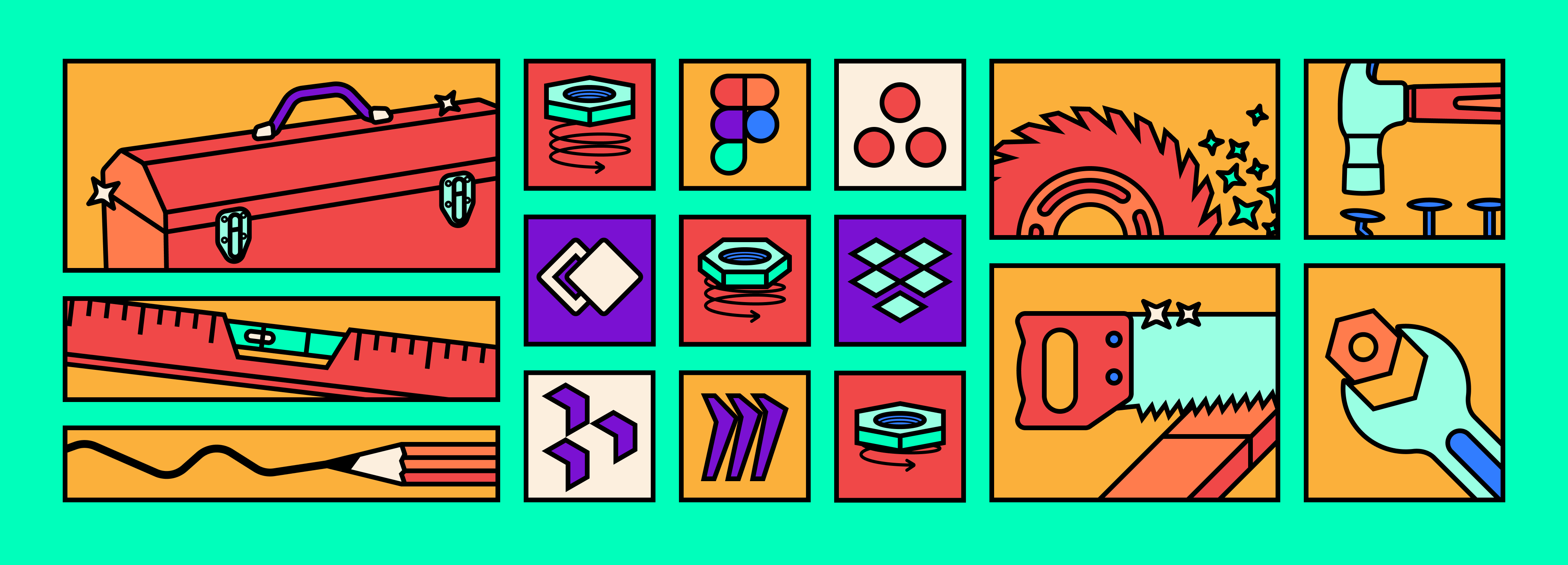
The Tools You Should Be Using To Build Digital Products In 2022
To build a better product, you must put a lot of thought, time, and energy into finding the right tools. Great tools enhance creativity & collaboration, while poor tools draw you away from efficiency and can over-complicate your process.
There’s no shortage of tools to support your product process today. But the question becomes: Which tools are the best in today’s landscape?
Our product experts at Innovatemap compiled this list of our recommended tools for each of the main product disciplines—product management & product design, and brand design & product marketing.
Simplicity Is Key
When picking tools for your product team to use, our number one recommendation is to keep it simple. Overloading your tool suite can confuse processes and make it hard to connect with your stakeholders quickly.
The goal is to prioritize your team’s preferred tools, not sign up for everything under the sun. Then, you should implement shared strategies around how everyone who has a stake in building the product should be using them.
Improve How You Work: Tools To Get The Job Done
The first tools you should find are the necessary tools that help you do your job. These are the products you’ll use to synthesize & communicate research findings, build a concept design, or mock-up a logo.
Product Management & Product Design
1. Whimsical. Whimsical breathes life into your ideas, allowing product managers and designers to create visualizations for almost anything they would need when building a product. It’s our team’s source of truth for creating and sharing workflows, mapping wireframes, and more.
“The best feature: it’s simple and straightforward,” says Senior Product Manager Jake Trowbridge. “There isn’t a ton of bells and whistles to distract you.”
2. Notion. Whether you’re on the design team or a product manager, staying aligned on shared goals and tasks is a must. Notion is one of our team’s favorite ways to collaborate, so all can understand high-level goals and the details that allow us to achieve them in one place.
If you’re a product manager especially, you are essentially a “spoke on the wheel”; you will touch many other disciplines and roles. Tools like Notion can serve as your source of truth so you can know what everyone is working toward, on what timeline, and how that aligns with your product roadmap.
3. UX Friday on Figma. When members of our product design team, Piyush Dawande and Diana Jeong Ro, saw an opportunity for design systems to make UX work more streamlined & efficient, they developed UX Friday. The framework includes 500 commonly used UX components and styles to help product designers launch projects, “so all you need to do is inject your brand and get started without reinventing the wheel.”
Product Marketing & Brand
1. Dropbox Paper. As a product marketer, collaboration on foundational statements, messaging, and positioning is key. Our product marketing team prefers Dropbox Paper for this work because in addition to supporting collaboration, the interface is focused and uncluttered.
2. Figma. Figma hasn’t only changed the game for designers; it’s made it much easier for product marketers to share information and collaborate on designs—making brands far more informed by the product marketing perspective.
See The Bigger Picture: Tools To Obtain Better Insights
Product Management & Product Design
1. Miro. Miro makes your workshops magic. Even if the clients you serve aren’t in the room, Miro keeps the emphasis on live collaboration. That way, every stakeholder can easily contribute and re-prioritize when you’re identifying what is needed to build a new product or product feature.
2. Dovetail. Dovetail is a great resource for product management and research teams to collect user interviews and data in one place. Keeping your product design team on the platform will also ensure everyone is working with the same user insights to continuously evolve and improve your digital product.
“The tagging feature makes what used to be a painful process so much easier, leaving time for thoughtful consideration about what we learn,” says Kate Harrison.
3. Aha! Ideas. On Aha! Ideas, product managers can get feedback from stakeholders in real-time. The platform allows product managers to create internal or external portals where users can share their reactions and recommendations; what’s more, other users can vote on and respond to what their peers say. For Spencer Abrams, “this gives product teams a sense for what their customers care about and data to use in their prioritization decisions.”
Product Marketing & Brand
1. Miro. It’s not just for product managers! This tool is ideal for any moment in which you would use a whiteboard in real life. In product marketing and brand, this is the platform to use when conducting a brand discovery workshop or when you’re aligning on a foundational statement.
2. Back to Figma. Sure, you can present your product marketing and brand work in traditional ways; after all, we love a good Google Slides deck or PowerPoint to get feedback on final deliverables. But Figma can be used for all kinds of designs—websites, brand designs, illustrations, and more—and most importantly, it gives your stakeholders the power to fully visualize the design before it’s out in the world.
“Sharing designs on Figma helps the client visualize where the copy will go and give better feedback,” Meghan Pfeifer says.
Follow The Trends: Tools To Keep Up With The Industry
Today, content is king—it’s easier than ever to find the resources and thought leaders you need to stay educated. Below is a short list of what our team recommends as a starting point to keep your creative fire burning.
Product Management & Product Design
Product Marketing & Brand



